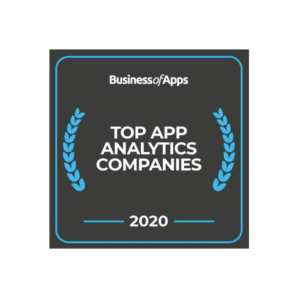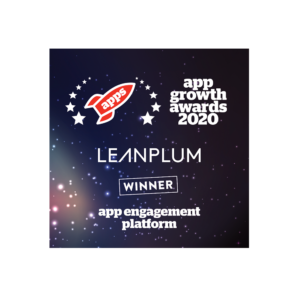Location Based Marketing
Interested in Leanplum?
What is location-based marketing?
Location-based marketing, also known as geolocation marketing, is a form of mobile personalization which is widely used by marketers working in a broad range of different industries. It offers huge potential for brands looking to boost engagement with their existing customers, and it can be highly effective at helping brands to target new customers too.
The idea works through the use of location data, which is analyzed and acted upon in real-time. Brands using location-based marketing will send out automated messages to customers depending on their location. This provides a world of new opportunities for brands to connect with their customers, and it can rapidly boost both engagement and conversions.
How does location-based marketing work?
There are three categories of location-based marketing:
- Geo-targeting
- Geo-fencing
- Beacons.
All three target customers depending on their distance from a predetermined target, with each of the three working at different levels of distance. All three types of location-based marketing can be used to trigger automated messages, such as push notifications. But they work in slightly different ways.
Geo-targeting generally uses a visitor’s IP address rather than GPS location, so geo-targeting actually predates mobile. Of course, IP addresses aren’t very precise, and it can be cumbersome for marketers to target specific neighborhoods based on IP address blocks. That’s why this type of geo-targeting is more commonly used for broad regions, as an entire city.
Geo-fencing is the mobile era’s answer to more traditional ideas like geo-targeting. Geo-fencing uses a mobile device’s GPS location rather than its IP address. This means that the data is much more precise, and therefore far more useful for brands looking to make the most of their location-based marketing ideas. A geo-fence can be as wide as a city, but it’s more effective when targeting smaller regions like specific neighborhoods or streets.
Finally, beacons are the narrowest of all three location targeting methods. A beacon is a small, physical object that receives location data from nearby devices via Bluetooth. Because it’s Bluetooth-based, beacons can be deployed in areas with poor reception, such as the interior of a store. This location-based marketing option springs into action when a customer is quite close to a target location. They’re great for brands looking to engage with customers who are very near to, or even inside one of their stores.
Using any one of these three methods, marketers can trigger push notifications when users reach a particular location. For example, a travel app using geo-targeting may send a message to all users stuck in a New York snowstorm about a flight sale to the Bahamas — an enticing deal for those with winter blues. Or a retail app using beacons may trigger a push notification to shoppers in a brick-and-mortar store a sale at that branch. Using location-based marketing to personalize messages means you can send more relevant messages and improve conversion rates at exactly the right moment.
Why use location-based marketing?
There are many reasons why brands choose to use location-based marketing to connect with customers. Ideal for companies looking to improve the customer experience, location-based marketing provides a number of new opportunities to impress.
When companies choose location-based marketing, they can target their interactions more precisely. And that’s great news where budgets are concerned. Brands can use this technology to connect with the customers that are most likely to make a purchase, eliminating the element of waste that marketers must deal with in any large-scale campaign. This means that the return on investment is higher, as engagement rates rise with better targeting.
Personalization can be taken up a notch when companies start to explore the potential of location-based marketing. The innovative technology makes it possible for brands to tailor communications to customers based on where they are, and therefore personalize these interactions accordingly. It’s perfect for brands hoping to maximize the potential of personalization and make sure every customer journey is a smooth and efficient one.
What are the benefits of location-based marketing?
Location-based marketing offers a multitude of benefits, which can be of real use to brands in all sectors. For companies looking to make the most of their marketing budgets, location-based marketing is a real advantage.
The technology helps to ensure that campaign budgets are being used carefully and directed towards the prospects that are most likely to engage with the brand and make a purchase. Audiences can be segmented based on a company’s existing data, to help ensure that budgets are being spent wisely and returns on investment remain high.
Location-based marketing is also beneficial where customer experience is concerned because it can really help companies to impress their customers and attract new ones. When the technology is put to full use, consumers can’t fail to be impressed by how well personalized every message they receive is – and how engaging they find every interaction.
What are the secrets to an effective location-based marketing campaign?
Location-based marketing allows us the comprehensive vision to tailor messages specifically for our users. To increase the chances that location-based push notifications convert users, marketers should also segment their audiences and trigger messages based on lifecycle stage, behaviors, preferences, or demographics.
For example, if a brick-and-mortar department store has multiple offers, ranging from clothing to home goods, its app counterpart could send a push notification luring customers into the store.
Once customers have ventured into the store, the app could then be used to target different segments based on their past shopping behavior. This added element of personalization can be used in a whole range of ways, from sending someone who has previously purchased a couch information about a flash sale on rugs, to notifying a previous customer about a new range of fabric covers for the seating they bought last year.
Mobile messages can be enhanced further with the addition of deep links, which would take users straight through to conversion points like a product details page or their shopping cart. By making it easy for customers to shop in-store and online, brands can start to make the most of the potential of location-based marketing.
Finally, a word of advice when it comes to obtaining user location data: For the most accurate data, encourage your customers to enable location services. To increase the number of users who opt-in for location-based marketing, send an in-app message explaining how location services can improve the app experience — before the default system prompt.
You can find out more about effective location-based marketing campaigns with Leanplum’s Geolocation Marketing: Taking It to the Streets webinar.






